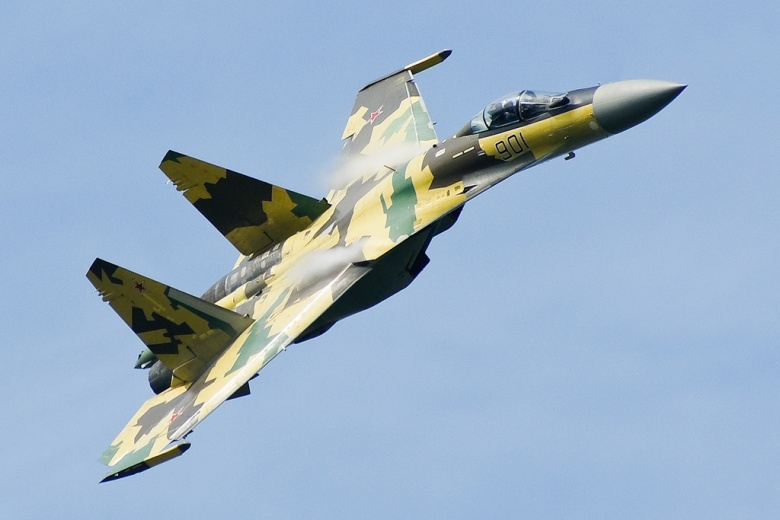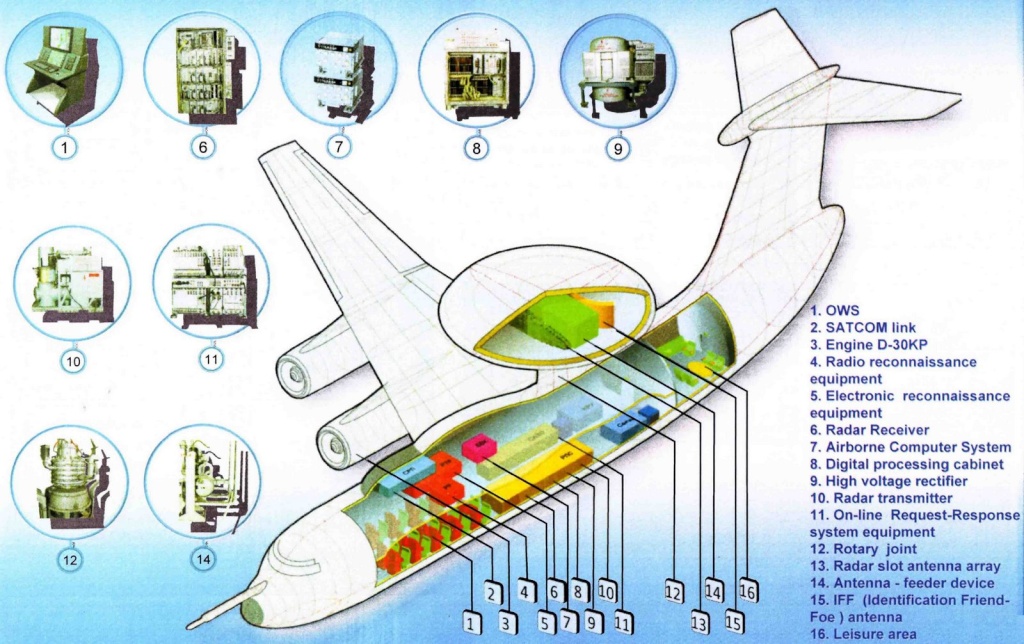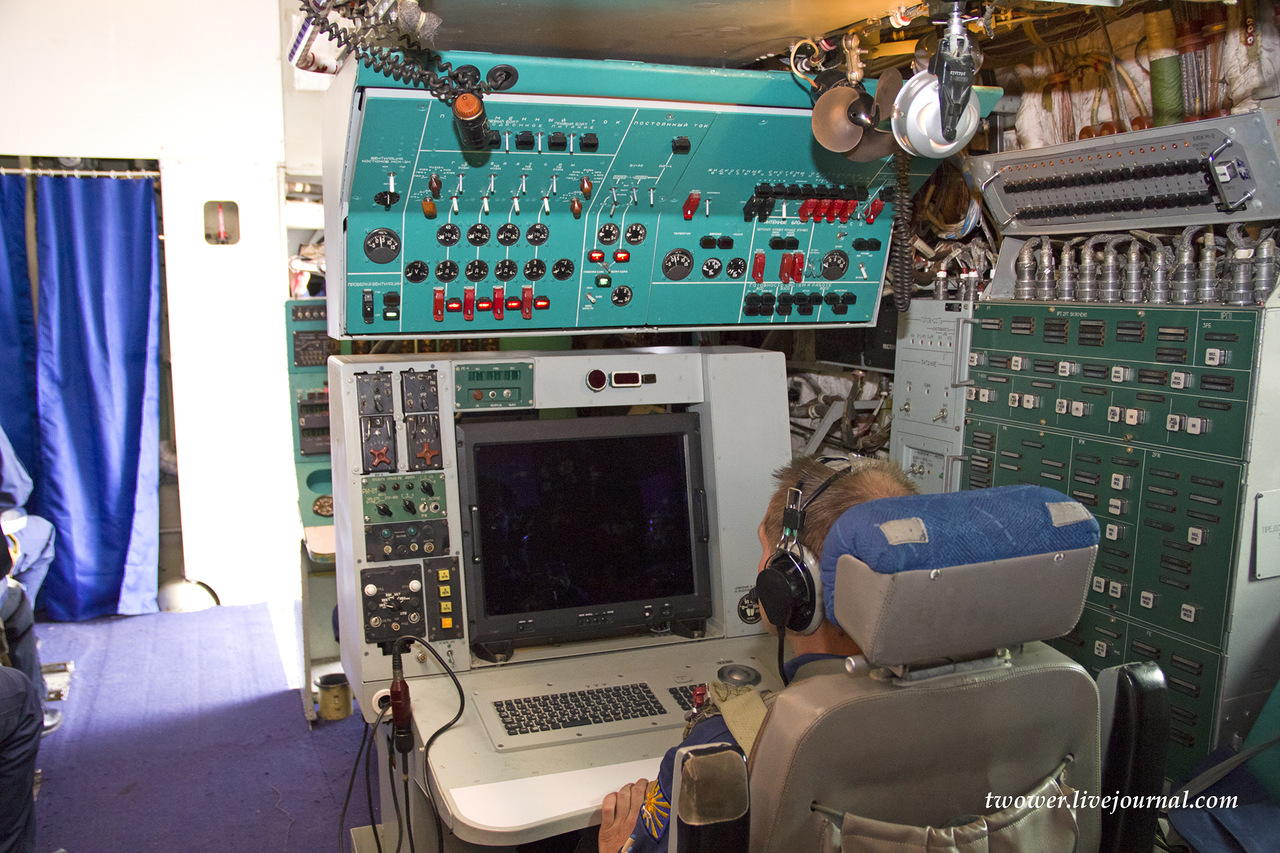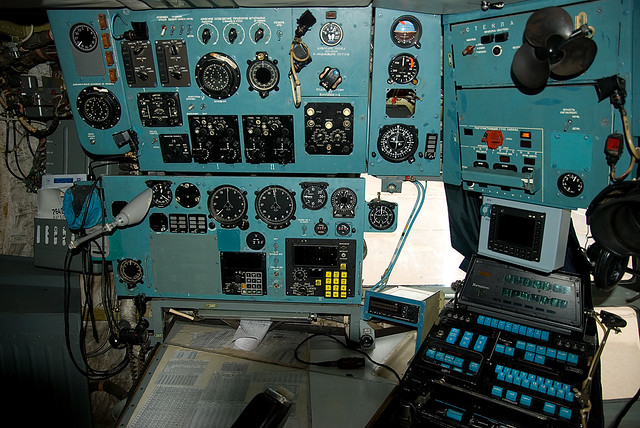Antonov An-70
The Antonov An-70 is a four-engine medium-range transport aircraft, and the first large aircraft to be powered by propfan engines. It has been developed in late 80th in Antonov design bureau to replace the obsolete An-12 military transport aircraft. Unfortunately the dissolution of the Soviet Union prevented the mass production of the type. Maiden flight of the first prototype took place on 16 December 1994 in Kiev, now independent Ukraine, and the plane was lost in less than a year. Numerous further attempts to start production haven't been so far successful.
Here goes the code of the element you want to show
Ka-60 Kasatka (Killer Whale), Russia
The Ka-60 Kasatka or Killer Whale helicopter is a medium weight transport helicopter developed by Kamov. Kamov helicopters are well known for the co-axial contra-rotating rotor design, but the Ka-60 has a single four-bladed main rotor with an anti-torque tail rotor. The Ka-60 is designed for carrying troops, weapons and ammunition to the battlefield, casualty evacuation and cargo transport using the external hook.
Kamov first unveiled the Ka-60 helicopter in 1997 and its first flight took place in 1998. The helicopter went on international display at the MAKS 1999 show held in Moscow. As well as the Ka-60 transport, Kamov has developed a civilian utility variant, the Ka-62.
La Fayette Class Frigate, France
The French Navy's La Fayette Class multipurpose stealth frigates were developed by DCN International (now DCNS) and built at the DCN Lorient Naval Dockyard. The French Navy awarded DCN the contracts to construct the La Fayette (F710), Surcoef (F711) and Courbet (F712) frigates in 1988, and Aconit (F713) and Guepratte (F714) in 1992.
The lead ship, La Fayette, was commissioned in 1996 and the last, Guepratte, was commissioned in November 2001. DCN have also built an anti-submarine warfare version for Taiwan (Kang Ding) and an anti-air version for Saudi Arabia (F3000S) under the Sawari II programme. All three have been launched and the first, Al Riyadh, was commissioned in July 2002.
SPYDER Surface-to-Air Launcher for PYthon 5 and DERby Missiles, Israel
Rafael Armament Development Authority, the MBT Missile Division and Elta Radar Division of Israel Aircraft Industries have announced the SPYDER surface-to-air PYthon 5 and DERby Air Defence Missile System. Rafael is the prime contractor and IAI the major subcontractor for the SPYDER program.
SPYDER is a low-level quick-reaction surface-to-air missile system capable of engaging aircraft, helicopters, unmanned air vehicles, drones and precision-guided munitions. It provides air defence for fixed assets and for point and area defence for mobile forces in combat areas. The SPYDER launcher is designed to fire PYthon 5 and DERby surface-to-air missiles.
Akash Surface-to-Air Missile System, India
The Akash (sky) is an all-weather medium-range surface-to-air missile (SAM) system developed in India. It provides multidirectional and multitarget area defence. The missile system was indigenously developed as part of the integrated guided-missile development programme (IGMDP). In operation from 1983 to 2007, the programme developed a range of missiles, including the Nag, Agni and Trishul missiles and the Prithvi ballistic missile.
In 2008, the Indian Air Force (IAF) introduced its indigenous SAM system after nine successful field trials. Some modifications to the Akash SAM, such as the launch platform, were made to the army version to meet mobility and gradeability requirements.
In June 2010, the Defence Acquisition Council (DAC) of India ordered Rs125bn ($2.8bn) of the army version Akash missile system for induction into the Indian Army.
Shenyang J-31

The Shenyang J-31, (or "FC-31 fifth Generation Multi-Purpose Medium Fighter")also known as "Gyrfalcon" , or "Falcon Hawk" by some military enthusiasts, is a twin-engine, mid-size fifth-generation jet fighter currently under development by Shenyang Aircraft Corporation. The fighter has also been referred to as "F-60" or "J-21 Snowy Owl" in some media reports.
The Shenyang J-31 (F-60) is a fifth-generation, multi-role, twin-engine stealth fighter aircraft being manufactured for the People's Liberation Army Air Force (PLAAF) by Shenyang Aircraft Corporation, an affiliate of Aviation Industry Corporation of China (AVIC). It is the second stealth fighter that China has indigenously developed after the J-20.The J-31 fighter jet is intended to provide advanced defence capabilities in close-air support, aerial bombing and air interdiction operations. It can also perform suppression of enemy air defences and can be used as a carrier-based fighter on aircraft carriers. Initial operational capability of the aircraft is expected in 2020.
Sukhoi SU-37
The Su-37 multirole, all-weather fighter aircraft demonstrator is derived from the family of aircraft based on the Su-27, which was developed in 1977 by the Sukhoi Experimental Design Bureau in Moscow and is in service with the Russian Air Force and a number of other countries. This family also includes the Su-27UB, Su-30, Su-33, Su-32FN and Su-35, and has the Nato codename Flanker. The Russian Air Force is currently operating two Su-37 aircraft.
Yasen Class Submarine
Yasen-class submarines were designed by the Malakhit Central Design Bureau, formed by the combination of SKB-143 and TsKB-16, with work on the initial design scheduled for start in 1977 and completion in 1985. Malakhit is one of the three Soviet/Russian submarine design centers, along with Rubin Design Bureau and Lazurit Central Design Bureau.
SSBN Typhoon Class (Type 941), Russia
The Typhoon ballistic missile nuclear-powered (SSBN) submarines
are the largest submarines ever to be built. They were constructed at the
Severodvinsk Shipyard, on the White Sea near Archangel.
The first of the six members of the class to be commissioned was
TK 208 in 1981, followed by TK 202 in 1983, TK 12 in 1984, TK 13 in 1985, TK 17
in 1987 and TK 20 in 1989. The submarines were stationed with the Russian
Northern Fleet at Litsa Guba.
Of the six, only TK 17 and TK 20 are operational. TK 208 was
relaunched following refit in 2002 and is being used as a trials ship. TK 12
and TK 13 are decommissioned, waiting to be scrapped.
With assistance from the United States, through the cooperative
threat reduction programme, TK 202 has had its nuclear fuel removed by US
funded processing facilities and converted into forms suitable for long-term
storage or reuse. The UK has also agreed to take part in the dismantling of
Russia's decommissioned nuclear submarines.
Project 677 Lada Class / Project 1650 Amur Class Submarines, Russia
The Project 677 Lada Class diesel-electric submarines are being
built by Admiralty Shipyard for the Russian Navy. The class is also called the
Petersburg Class, after the lead submarine.
The Lada Class succeeds the Kilo Class submarines.
The keel for the lead sub in class, Sankt-Petersburg (B-585),
was laid down in December 1997 and launched in October 2004. The submarine was
delivered to the Russian Navy in April 2010 and commissioned in May 2010.
Two submarines under construction are: Kronshtadt (B-586) - laid
in July 2005 - and Sevastopol (B-587) - laid in November 2006. The Russian Navy
plans to build a total of eight Lada Class submarines.
MiG-35 / MiG-29M OVT / Fulcrum F
The Mikoyan MiG-35 (Fulcrum-F) is a 4++ generation fighter jet and a modification of the MiG-29M. It is equipped with air-to-air and air-to-surface guided missiles, as well as the Zhuk-A radar system. The MiG-29M OVT (Fulcrum F) highly maneuverable air superiority fighter was shown for the first time in August 2005 during the MAKS Air Show outside Moscow. The single-seat fighter, also marketed for export as the MiG-35, is powered by RD-33 OVT thrust vectoring control engines. The RD-33 OVT engines provide superior maneuverability capability to the aircraft enhancing its performance in close air-to-air engagements. The unique performance characteristics of this aircraft are based on RD-33 OVT thrust vectoring control engines.
Beriev A-50 Mainstay Airborne Early Warning and Control Aircraft (AEW&C)
The Beriev A-50 (NATO reporting name "Mainstay") is a Soviet-built Airborne early warning and control (AEW) aircraft based on the Ilyushin Il-76 MD transport to replace the Tupolev Tu-126 'Moss'. The A-50 was developed and manufactured by the Beriev Aircraft Research and Engineering Complex Joint Stock Company based at Taganrog in the Rostov Region of Russia.
Beriev aircraft normally carry the Russian designation Be- followed by the number, however, the A-50 aircraft retained the well-known A-designation which Beriev allocated to the original prototype.
The A-50 aircraft detects and identifies airborne objects, determines their coordinates and flight path data and transfers the information to command posts. The A-50 also acts as a control centre, guiding fighter-interceptors and tactical air force aircraft to combat areas in order to attack ground targets at low altitudes. The role of the A-50 is comparable to that of the US's E-3 AEW system developed by Boeing.
A-50 Mainstay programme and development
The A-50 entered service with the Russian Air Force in 1984. Currently, 16 aircraft are operational in the Russian Air Force. The upgraded version, the A-50U was first announced in 1995 but did not enter testing until 2008. It then entered service in 2011. The upgraded A-50Us have extended the aircraft's the service life to 2020.
The modernised A-50 aircraft can now take more fuel on board with the same take-off weight, while increasing the range and mission time performance. A satellite navigation system integrated into flight and navigation complex offers a dramatic increase in the navigational accuracy.
Design
The A-50 is based on the Ilyushin Il-76 transport aircraft, but the majority of the modifications have been performed by Beriev. In comparison to the original airframe, the A-50 incorporates a lengthened fuselage with space for display consoles and communications sytems for the 10 mission specialists. A large rotating radome mounted is mounted above the fuselage. Installed in the forward portion of the radome is the antenna for the surveillance radar while the after section houses various data-link systems that allow the A-50 to vector up to 10 or 12 interceptors at once.
Avionics
The A-50 AWACS is equipped with a flight control and navigation system used to ensure air navigation at all flight stages, in VFR and 1FR conditions, by day and night, in any season and in all latitudes. The system also provides flight control and navigation data intended for special systems. The aircraft's electronic equipment enables the crew to perform combat missions in a hostile ECM environment.
The A-50 AWACS is fitted with the NPK-T flight control and navigation system used to ensure air navigation during all flight stages in all-weather day and night and all-year operations performed at all geographical latitudes. The system also provides flight control and navigation data intended for mission specific systems and equipment.
Radar system
The A-50U airborne radar warning and guidance system is the Schnel-M produced by Vega. It comprises:
- radar station
- data reduction system
- interrogator-responder and signal transmission system
- digital computer complex
- identification friend or foe (IFF) equipment
- command radio link to guide fighters
- encoding communication system
- radio communication equipment
- telemetry / code equipment
- registering equipment.
The radar and guidance systems have the capacity to track 50 to 60 targets simultaneously and to guide ten to 12 fighter aircraft simultaneously. The radar "Vega-M" is designed by MNIIP, Moscow, and produced by NPO Vega. The "Vega-M" is capable of tracking up to 50 targets simultaneously within 230 kilometers. Large targets, like surface ships, can be tracked at a distance of 400 km.
Countermeasures
The A-50 is fitted with a self-defence system when flying en-route and over patrol zones. The self-defence system ensures protection from guided and unguided weapons of the enemy's fighters attacking the aircraft from its front and rear hemispheres. The self-defence system includes an electronic countermeasures system.
The aircraft can also be protected from the enemy's fighter aircraft via guidance of friendly fighters.
The aircraft radio and electronics systems are robust against hostile jamming and provide good combat performance in dense electronic countermeasures environments.
Propulsion
The A-50 AWACS is motorized with four Soloviev D-30KP turbofan, 117,68 kN (26,500 lbf) each. The A-50 carries out patrol missions at an altitude of 5,000m to 10,000m. The patrol service ceiling is 10km. The maximum flight range of the aircraft is 5,000km and the flight endurance is seven hours 40 minutes. At a range of 2,000km, the A-50 can remain on patrol for up to one hour 25 minutes. The maximum take-off weight of the A-50 is 170,000kg. It can travel at a maximum speed of 800km/h. The aircraft can be refuelled by Il-78 tankers.
Variants
A-50M – Modernized Russian Version fitted with mid-air refueling capability.
A-50U – updated Russian variant
Izdeliye-676 – One-off stop-gap telemetry and tracking aircraft.
Izdeliye-776 – One-off stop-gap telemetry and tracking aircraft.
Izdeliye-976 (SKIP)] – (СКИП – Самолетный Контрольно-Измерительный Пункт, Airborne Check-Measure-and-Control Center) – Il-76 based Range Control and Missile tracking platform. Initially built to support Raduga Kh-55 cruise missile tests. Has fixed radar cover filled with other equipment and glassed navigator cockpit, (One prototype and five production conversions).
Izdeliye-1076 – One-off special mission aircraft with unknown duties.
A-50I – variant with an Israeli radar, designed for China but project cancelled under pressure of United States
A-50E/I – With Aviadvigatel PS-90 A-76 engines, with Israeli EL/W-2090 radar made for the Indian Air Force
Specifications
Type
AWACS airborne warning and control system
Engine
4 × Soloviev D-30KP turbofan, 117,68 kN (26,500 lbf) each
Altitude
5,000 - 10,000 m on patrol
Producer
Russia
Operators
Russia, India and Iran
Tracking detection
Simultaneously tracked targets: 50- 60
Simultaneously directed fighters: 10 - 12
Detection range: 220 -240 km
Speed
Maximum speed: 900 km/h (559 mph)
Range: 6,400 km (3,977 mi)
Service ceiling: 12,000 m (39,371 ft)
Take Off Weight
190,000 kg
Avionics
NPK-T flight control and navigation system, day and night flying system, self-defense electronic system
Dimension / Weight
Length: 49.59 m (152 ft 8 in)
Wingspan: 50.50 m (165 ft 6 in)
Height: 14.76 m (48 ft 5 in)
Wing area: 300 m² (3,228 ft²)
Empty weight: 75,000 kg (165,347 lb)
Spike Anti-Tank Missile
Rafael, based in Haifa, Israel,
manufactures the Spike family of anti-armour weapons. The weapons are
lightweight fire-and-forget anti-tank missiles and use electro-optical and
fibre-optic technologies. The systems are used by infantry soldiers, special rapid
reaction forces, ground forces and helicopter aircrew.
VC-25 - AIR FORCE ONE
Mission
The mission of the VC-25 aircraft -- Air Force One -- is to provide air transport for the president of the United States.
Features
The presidential air transport fleet consists of two specially configured Boeing 747-200B's -- tail numbers 28000 and 29000 -- with the Air Force designation VC-25. When the president is aboard either aircraft, or any Air Force aircraft, the radio call sign is "Air Force One."
The mission of the VC-25 aircraft -- Air Force One -- is to provide air transport for the president of the United States.
Features
The presidential air transport fleet consists of two specially configured Boeing 747-200B's -- tail numbers 28000 and 29000 -- with the Air Force designation VC-25. When the president is aboard either aircraft, or any Air Force aircraft, the radio call sign is "Air Force One."
MQ-1B PREDATOR
Mission
The MQ-1 Predator is an armed, multi-mission, medium-altitude, long endurance remotely piloted aircraft (RPA) that is employed primarily in a killer/scout role as an intelligence collection asset and secondarily against dynamic execution targets. Given its significant loiter time, wide-range sensors, multi-mode communications suite, and precision weapons -- it provides a unique capability to autonomously execute the kill chain (find, fix, track, target, engage, and assess) against high value, fleeting, and time sensitive targets (TSTs). Predators can also perform the following missions and tasks: intelligence, surveillance, reconnaissance (ISR), close air support (CAS), combat search and rescue (CSAR), precision strike, buddy-lase, convoy/raid overwatch, route clearance, target development, and terminal air guidance. The MQ-1's capabilities make it uniquely qualified to conduct irregular warfare operations in support of Combatant Commander objectives.
The MQ-1 Predator is an armed, multi-mission, medium-altitude, long endurance remotely piloted aircraft (RPA) that is employed primarily in a killer/scout role as an intelligence collection asset and secondarily against dynamic execution targets. Given its significant loiter time, wide-range sensors, multi-mode communications suite, and precision weapons -- it provides a unique capability to autonomously execute the kill chain (find, fix, track, target, engage, and assess) against high value, fleeting, and time sensitive targets (TSTs). Predators can also perform the following missions and tasks: intelligence, surveillance, reconnaissance (ISR), close air support (CAS), combat search and rescue (CSAR), precision strike, buddy-lase, convoy/raid overwatch, route clearance, target development, and terminal air guidance. The MQ-1's capabilities make it uniquely qualified to conduct irregular warfare operations in support of Combatant Commander objectives.
K-37M
The K-37M, RVV-BD or AA-13 Arrow western designation, is a long-range air-to-air missile being developed for the Mig-31BM interceptor. It has also had the names K-37, Izdeliye 610 and R-VD (Raketa-Vysokaya Dalnost, "Very Long Range Missile"), and the NATO codename 'Andi'.
It was designed to shoot down AWACS and other C4ISTAR aircraft whilst keeping the launch platform out of range of any fighters that might be protecting the target.
The K-37M seems to be a successor or leverage some technology from the R-37 air-to-air missile developed by the Soviet Union for the Mig-31M in the 1980s as a replacement for the R-33 missile. As of summer 2010 the missile system program was still in the development phase as the primary weapon for the Mig-31BM aircraft. The Russian reported that the K-37M underwent first firing testings in early 2012. The R-37M designation will apply when the new long-range air-to-air missile enters operational service with the Russian Air Force.
According to Defence Today the range depends on the flight profile, from 80 nautical miles (150 km) for a direct shot to 215 nautical miles (398 km) for a cruise glide profile. According to Jane's there are two variants, the R-37 and the R-37M; the latter has a jettisonable rocket booster that increases the range to "300-400km" (160–220 nm).
The missile was designed in the early 1980s and first flown in 1989. Testing of the R-37 continued through the 1990s; in 1994 a trial round scored a kill at a range of 162 nautical miles (300 km). However, the programme appears to have been dropped around 1998 on grounds of cost.
Work on the missile appears to have restarted in late 2006, as part of the MiG-31BM programme to update the Foxhound with a new radar and ground attack capability.
The Medium Extended Air Defense System (MEADS)
The Medium Extended Air Defense System (MEADS) is a tri-national missile defense project of the United States, Germany, and Italy. MEADS is currently in the design and development phase, but once operational, it will use the new Patriot Advanced Capability-3 (PAC-3) Missile Segment Enhancement missiles to protect ground forces and fixed military positions against attack from tactical ballistic missiles, low and high altitude cruise missiles, aircraft, and unmanned aerial vehicles.
Advanced Hypersonic Weapon (AHW), United States of America
The Advanced Hypersonic Weapon (AHW)
is a demonstrative long-range glide vehicle capable of flying within the
planet's atmosphere at hypersonic speed. The AHW technology demonstration
programme is managed by the US Army Space and Missile Defence Command (USASMDC)
/ Army Forces Strategic Command (ARSTRAT).
The technology was developed through
the cooperative effort of the US Department of Defence to evaluate a
conventional prompt global strike (CPGS) capability for striking time-sensitive
high-value targets.
In November 2011, AHW was launched
from the Pacific Missile Range Facility in Kauai, Hawaii, to the Reagan Test
Site on the Marshall Islands. The glide vehicle successfully hit the target,
which is located about 3,700km away from the launch site. The vehicle's flight
characteristics were gathered from space, air / sea and ground-based platforms.
The test was conducted to demonstrate
hypersonic boost-glide technologies and trial the capability for atmospheric
flight at long-ranges. The flight test was carried out in accordance with the
regulations of Strategic Arms Reduction Treaty I, as well as the
Intermediate-Range Nuclear Forces Treaty.
FN HERSTAL - Helicopter and Aircraft Weapon Systems
FN Herstal provides integrated airborne
weapon systems with unprecedented and unequalled firing capabilities for
multi-role helicopters and subsonic aircraft while maintaining simplicity of
use and crew safety.
Taking advantage of its century-long firearms
expertise, FN Herstal designs, develops and manufactures fully integrated
airborne weapon systems equipped with combat proven, single-barrel automatic
machine guns that offer reliability, accuracy, simplicity and safety.
FN Herstal's integrated airborne weapon
systems include crew-served or axially mounted machine guns, rocket launchers
and a complete range of ammunition.
More than just selling weapon systems, FN
Herstal develops the complete integration of the system together with the
helicopter manufacturer or directly with the end user. The company supervises
the installation of all its products and provides operator training as well as
a high-quality after-sales service to meet our customers' requirements.
For 120 years, FN Herstal has successfully
equipped generations of soldiers, airmen and marines. Its solid reputation can
be attributed to its rigorous professional ethics, ongoing effort to achieve
foremost quality, and commitment to efficient service and outstanding customer
support. Every weapon FN Herstal builds proudly bears the FN Herstal oval, a
mark that represents more than a century of experience making the finest
weapons in the world.
Subscribe to:
Posts (Atom)

.jpg)

















